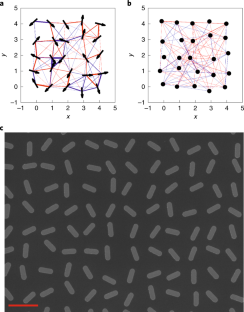2022-03-24 イリノイ大学アーバナ・シャンペーン校
・Jamann とその共同研究者たちは、米国農務省のトウモロコシの生殖能力強化(GEM)プロジェクトによる 25 種類のトウモロコシを 4 州の 9 か所で栽培し、キューバとブラジルの生殖質から 得た 2 つの系統、GEMS-0066 と GEMS-0226 は、栽培場所に関係なく、有望なレベルのタール スポット耐性を示した。また、育種プログラムでそれらを使用して耐性雑種を開発することができた。
・「一般的に、葉面病は0~100%のスケールで評価します、しかし、タールスポットの場合、葉の上に小さな点ができるため、5%と20%などを正確に推定することは非常に困難です。」
・他の事例を参考に、タールスポットについて1~9の評価尺度を開発した。また、抵抗性を測定するための効率的で信頼できるシステムが必要です。
・試験圃場にタールスポットを植え付けるのに、感染した植物の残渣を圃場に撒いたり、前年に感染した圃場でトウモロコシを栽培したりした。
・「この論文では、この病気には多くの環境変数が重要であることを明確に示しています。残念ながら、このデータを利用するために十分な量の感染が確認されたのは、観測地点の約半分にすぎませんでした」とジャマンは言う。

<関連情報>
- https://aces.illinois.edu/news/illinois-researchers-find-exotic-sources-resistance-tar-spot-corn
- https://acsess.onlinelibrary.wiley.com/doi/abs/10.1002/csc2.20709
外来種由来胚珠におけるトウモロコシのPhyllachora maydisに対する抵抗性の同定 Identification of resistance for Phyllachora maydis of maize in exotic-derived germplasm
Sarah Lipps,Damon Smith,Darcy Telenko,Pierce Paul,Nathan Kleczewski,Tiffany Jamann
First published: 13 January 2022
Abstract
Tar spot of maize (Zea mays L.), caused by the obligate biotroph Phyllachora maydis Maubl., is an emerging disease in the United States and Canada, and the identification of sources of resistance for tar spot will enable the development of resistant hybrids. In 2019 and 2020, 25 accessions from the germplasm enhancement of maize (GEM) project containing exotic introgressions in elite backgrounds were evaluated in nine environments for tar spot severity. Environmental conditions had a major influence on disease development, as tar spot severity varied across locations with only four of the nine locations showing moderate to high levels of disease. In five environments, disease levels were low and disease severity data was not collected or used. Accessions were visually evaluated for tar spot during reproductive growth stages in three environments and during vegetative growth stages in one environment. There was a strong correlation between resistance to P. maydis across locations where accessions were evaluated in reproductive growth stages. Two accessions, GEMS-0066 and GEMS-0226, were the most resistant and could prove useful for tar spot resistance breeding. These accessions are publicly available and able to be directly used in breeding programs.


